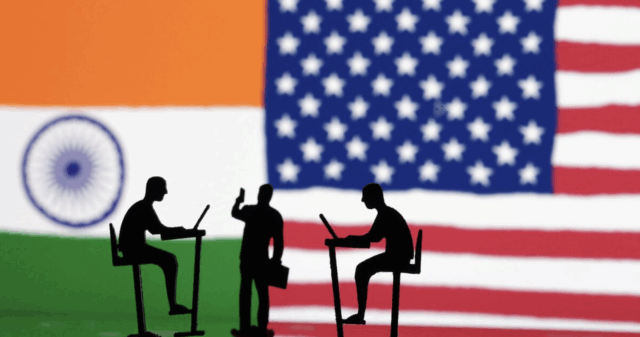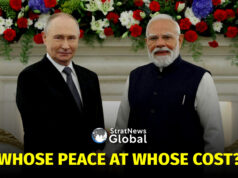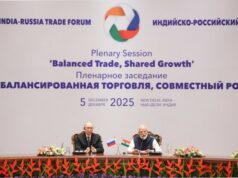As the United States steps up efforts to secure a trade agreement with India ahead of its self-imposed August 1 deadline, New Delhi is proceeding with caution, determined not to compromise national interests despite growing pressure.
Experts have warned that India must resist any unbalanced or excessive demands from Washington, especially in light of complications surrounding America’s recent trade deals with other nations.
Commerce and Industry Minister Piyush Goyal over the weekend confirmed that discussions with both the U.S. and Oman have progressed significantly. A high-level American delegation is expected next month to continue negotiations.
“India’s approach is guided by prudence and principle,” said Ajay Srivastava of the Global Trade Research Initiative (GTRI). “While a deal with the U.S.—India’s largest trading partner—would carry major economic and strategic weight, it’s critical that New Delhi does not yield to one-sided terms.”
Learning From Others
India’s measured stance stems in part from the fallout of recent U.S. trade arrangements. The U.S.-Japan agreement, for instance, has drawn criticism for its ambiguity and perceived imbalance. American officials claimed Japan had pledged $550 billion in investments, with 90% of returns flowing to U.S. taxpayers. However, Tokyo later clarified there was no binding agreement, and profit-sharing would be proportional to financial contributions—a clear disconnect in expectations.
Similarly, trade agreements with Indonesia and Vietnam, announced unilaterally by President Donald Trump, remain under negotiation or lack full ratification. In Vietnam’s case, uncertainty over high tariff impositions threatens to reduce exports to the U.S. by up to 33%, according to Bloomberg, with potential losses of $37 billion in revenue across key sectors such as electronics, garments, and machinery.
No Concessions Under Pressure
Despite the Trump administration’s August 1 cut-off for new deals before tariffs escalate, India has notably not been issued a tariff warning, unlike several other nations.
According to GTRI, a potential U.S.-India deal could mirror the template used with Japan, the EU, and others—introducing 10% to 20% tariffs on Indian exports in exchange for Indian tariff reductions, investment commitments, and greater regulatory access for American firms.
However, experts are urging India to scrutinize each clause, especially provisions related to market access for U.S. agricultural and tech products, and investment protections that could challenge India’s policy autonomy.
U.S.–EU Template
The most recent U.S.–EU trade pact finalized in Scotland on July 27 serves as a cautionary example. While it avoided an outright trade war, it came at the cost of sweeping concessions from Brussels.
The U.S. agreed to reduce a proposed 30% blanket tariff to 15% on most EU goods, while retaining high duties on steel and aluminium. In return, the EU committed to eliminating tariffs on many American exports and pledged massive investments and purchases—including $750 billion in U.S. energy and $600 billion in infrastructure.
Critics in Europe have questioned whether the deal undermines EU industries, especially given the deep cuts in regulatory protections and standards for U.S. products.
“The risk for India is entering into a similarly imbalanced framework that demands disproportionate sacrifices in return for uncertain benefits,” warned a Delhi-based trade analyst.
While both India and the U.S. see value in deepening economic ties, the current environment calls for restraint and strategic clarity. A deal remains possible, but Indian negotiators are expected to maintain a firm stance in safeguarding long-term interests.
“The next few weeks will be critical,” said Srivastava. “India must secure a deal that is equitable, enforceable, and respectful of its economic realities.”





